In its recent customer magazine, Drive, HR Owen ran a feature on the 50th anniversary of the opening of the first Athena store in Hampstead in 1964.
In its recent customer magazine, Drive, HR Owen ran a feature on the 50th anniversary of the opening of the first Athena store in Hampstead in 1964.
In its recent customer magazine, Drive, HR Owen ran a feature on the 50th anniversary of the opening of the first Athena store in Hampstead in 1964.
In its recent customer magazine, Drive, HR Owen ran a feature on the 50th anniversary of the opening of the first Athena store in Hampstead in 1964.
HR OWEN
Turnover £261m (2013) |
|
Franchise representation |
|
 |
|
|
|
It may seem like a curious association –between a dealer group and a poster retailer – until you make the link between the dreams of boys on their way to becoming rich entrepreneurs and a company that has been associated with luxury motoring since the 1920s.
From its roots in Mayfair in 1932 and links with established motor trader and ‘gentleman racer’ Jack Barclay, HR Owen is today the largest luxury and supercar dealer in the UK and one of the best-performing in the world. It specialises in high-end vehicles, is an official dealer for eight of the most prestigious car brands – including Aston Martin, Bentley, Ferrari and Lamborghini – and has 12 sales sites in London and the South, plus a dealership in Manchester.
However, with such a portfolio comes great responsibility. HR Owen has to fulfil the demands of the luxury brands and meet the expectations – even fulfil the dreams – of hugely wealthy ‘petrolheads’ whose passions were first stirred by posters of supercars on their bedroom walls.
Big rewards come with big risks
The rewards for meeting the expectations are significant – Maserati’s new Ghibli with a £48,000 price tag is at the cheap end of what HR Owen sells – but so is the weight of responsibility. And if you look at the group’s financial results, it had begun to show.
Ten years ago, turnover more than halved and while improving, is still a long way off the £687 million maximum it has achieved and profits have been performing in a snakes and ladders fashion for longer.
[page-break]In 2011, Joe Doyle took over from Andy Duncan, who had lasted just 13 months in the chief executive position. Doyle set about steadying the ship and his management team adopted a strategy that focused on bringing staff, customers and manufacturer brands together, supported by the latest technology at every step.
A strategy paper from 2011 refers to this mix: HR Owen would “offer the best luxury car experience in the world for its clients”; “experience is everything” and customers would love dealing with the company “almost as much as their cars”.
HR Owen would help manufacturers develop their brands and their understanding of how best to service their customers and “provide access to the global elite through the world’s leading capital, London”.
Embracing the cutting edge of digital communication
In 2011, the group said it would “invest in world-class, leading edge internet capability as a basis for direct sales and revenue-generating activity, excellence in customer relationship management and outstanding brand-building and customer communications capability”.
HR Owen marketing director Chris Harris shared the tactics and technology employed in ensuring those objectives were fulfilled, and said the company had emerged stronger from the recession.
Harris is supported by Sarah Keyes, who ran British Airways’ Executive Club, Toni Madge, who ran events for the Oasis Centre charity, and Alex Brown, who launched collinsdictionary.com at Harper Collins.
None has motor experience, but they are supported by six marketing managers who have it “in spades”.
Harris firstly rejects suggestions that HR Owen, with its rich entrepreneurial customer base, was immune to the financial crises. “Our customers, tuned into the economy, knew what was coming and guarded their cash. Sales rapidly tailed off, probably more quickly for us than in the wider market,” he said. “We had to fix HR Owen as London fixed itself.”
Customer communication has been critical to this. Harris oversees a consistent group-wide approach, which is measured as much on the tone of communications as it is on click rates.
HR Owen has a core customer base of about 10,000 people. In 2013, it sent out 177 email campaigns – about 170,000 emails. The average open rate was an impressive 47% (an all-industry figure of 25% is considered good).
Harris said this level of engagement was down to some simple factors.
‘Email is still the single most powerful marketing tool’
“Despite being in an age when we’re all supposed to be on Facebook and Twitter, broadcasting our thoughts to an audience, email is still the single most powerful marketing tool. And while it’s free to send, it needs considerable time and effort to make it work properly,” said Harris.
[page-break]The customer base is analysed and segmented to single out the best calls to communication – or sales opportunities. For example, this could be a Ferrari customer to whom HR Owen has missed an opportunity to sell within the past 18 months.
“The email might only go out to 35-40 people, but the value of our cars means just one sale is worth a lot of money and therefore the email is worth sending,” said Harris.
HR Owen’s analysis of response rates showed that emails from a staff member’s address delivered an open rate 5% greater than those from an ‘info@hrowen.co.uk’ address.
The group employs an unnamed, long-standing motor industry writer to compose its customer communications to ensure the tone is consistent and appealing.
“His tone and language is rich enough, but not overly complex or clever and we don’t try to show off our products. It’s not all luxury, luxury because this is irrelevant. Our message is about the credibility of our cars, respectful and to the point, and the quality of what we offer,” Harris said.
A key part of HR Owen’s customer contact plan is events, opportunities for customers to meet at dealerships or major events such as the recent Geneva Motor Show. The group hosted more than 200 events in 2013, twice as many as in 2012. It plans to hold the same number this year.
To mark Maserati’s centenary, it held a party at Maserati London in March, with new and classic models on display. It also organised a ‘beer and Bugattis’ party at Jack Barclay in London with six Veyrons on display (total value: £20m).
At the opening of Lamborghini Pangbourne, owners were invited to bring their cars.
“There was Italian food, prosecco, light music, mood lighting, and conversation among like-minded, wealthy people. There were no sheets whipped off a new car, no boring speeches,” said Harris.
‘Attention to detail drives up our email open rates’
A sophisticated email marketing system called Marketo automatically records RSVPs and informs staff at the event who to expect. They then check attendees off on arrival. Emails are sent the following day to acknowledge attendance, but also to those that couldn’t come: “Sorry you couldn’t make it, here are some pictures, if you would like us to call you…”
In its Geneva Motor Show email, HR Owen offered to arrange manufacturer stand passes for 300 customers (who paid their own expenses). Every evening it was an HR Owen staff member’s job to load the names of those that attended into the contact system, which would trigger “great to see you” emails.
“The attention to detail drives up our open rates,” Harris said. The group set an open rate target of 40%. The actual figure was 47% for the 177 email campaigns.
[page-break]HR Owen has further invested in technology by buying in Salesforce, a cloud-based customer relationship management (CRM) system, also used by Cisco, Toyota and Dell. Known as Kore at HR Owen, it connects with Marketo, but also underpins all customer contact activity, both from the marketing team and individuals in dealerships. It’s a significant, high six-figure investment, but is worth it, Harris believes.
Putting data at the heart of customer interactions
“Prior to Kore, we had multiple data systems. Joe Doyle acknowledged that if a Ferrari customer came into another brand dealership in 2011, we couldn’t acknowledge them properly; they were a stranger to us at that moment in time.
“But at its heart Salesforce is our data – it records all customer interactions including telephone calls and clicks on our website and where they come from to hrowen.co.uk, so Google, for example.”
Any salesperson in the business can see on their desktop who has bought from HR Owen, the marketing campaigns they’ve received, who in the business is planning to interact with them in the future and whether there are any current sales opportunities open.
“Where did the process that led us to selling a car today start? Salesforce helps us answer this, not anecdotally, not from a salesperson’s view of events, but reality.
“So, if a consumer clicks on an HR Owen ad on Pistonheads.com or calls a unique phone number in an ad, a record will be made in the system when it reaches a salesperson, along with their response to it. We can then watch the progress of the lead and the contact remains post purchase,” Harris said.
“We can see the correlation between calls made this month and sales the next.”
The detail available means HR Owen can tell which customers have more than one car, first-time buyers, people who no longer own and, since the company has service-only franchises for BMW, Mini and Audi, those it has never sold to.
Cleaning out the contacts database
HR Owen has contact information on nearly 25,000 people it has not courted fully. This year, it will focus on analysing that information.
“I’m fully expecting the number to drop by 5,000-10,000, as we sort out the dross, but there will be gold in here with some careful nurturing,” said Harris.
[page-break]Salesforce also displays sales staff call activity, calls made, leads followed up – or not. Harris said this appears a little like ‘Big Brother’, but insists staff reaction has been positive: “Sales people now use it to run their selling and general managers to manage their businesses. A couple of GMs have said they don’t know how they’d manage their businesses without it.” He also emphasised its power as a point of sales tool: a sales person can spec a vehicle, give the deal a value using Kee Resources data and an order form is generated.
“If you toured our showrooms you would see it open on every sales person’s computer screen,” said Harris.
Of course, the effectiveness of this means of providing attention to detail is measured.
Email is used to measure customer satisfaction, using the Net Promoter Score (NPS) system based around the question, ‘how likely are you to recommend our company/product/service to your friends and colleagues?’
NPS can be as low as −100 (everybody is a detractor) or as high as +100 (everybody is a promoter). An NPS that is positive (higher than zero) is said to be good and an NPS of +50 is excellent.
More than 2,500 surveys were sent in Q4 2013. Some 300 responses were received and HR Owen’s NPS was +71. Apple’s is said to be +47.
The impact of Salesforce on staff was critical. Doyle and the management team identified another challenge in 2011 –winning back the confidence of its 370 staff.
Internal surveys in 2011 and 2012, using NPS, asking staff if they would recommend the company for service, parts and sales saw group averages of just 19% and 28% respectively. The responses to whether they would recommend HR Owen as an employer were even worse, with an NPS score of -6 in 2011.
Increasing staff satisfaction with internal communication
The ‘group first’ strategy for 2013 aimed for all staff to believe “I feel as much part of the HR Owen group as my specific site or franchise”. Internal communication has been a key to improving staff satisfaction.
Throughout the potentially unsettling periods such as boardroom changes (including the departure of chairman Jon Walden), from the summer of 2013, Berjaya Philippines Incorporated’s negotiations to purchase a controlling stake in the company, and April’s de-listing from the stock market, Doyle kept up a steady stream of emails to staff informing them of changes and deciphering the management speak.
When an announcement is made to the stock market at 7am, an email to staff will be sent at 7.05. For those who don’t have access to email – technicians, for example – Doyle’s words are posted on notice boards.
The management team was also simplified with Doyle’s direct reports cut from about a dozen to six: HR, finance, marketing, two sales divisions, and IT.
[page-break]“There’s now clarity about who is doing what and where responsibility lies,” Harris said.
“Particularly with the sales divisions, where sales and aftersales had to some extent been working against each other, with several directors of each – very silo-like with more allegiance to each department or franchise than the company. And personal staff issues such as appraisals weren’t being done consistently.
“Now, sales and aftersales report to Tim Kearns and Paul Westaway and they have a line of sight and authority to work out the issues.”
These measures contributed to an 86% response rate to the company’s third annual employee survey in November 2013, up from 33% in 2012 – and an NPS score of 39%. “More than 50% is considered excellent, so we are on the cusp of this,” said Harris. He has a personal interest in improving these numbers – his bonus is based in part on staff satisfaction scores.
HR Owen’s latest financial results suggest its three years of work is paying off.
Preliminary results announced in March reported revenues up 7% to £261.1m in 2013. Pre-tax profit rose to £2.4m from £2.3m year-on-year and underlying operating profit rose 63% from £2.3m to £3.8m.
Login to continue reading
Or register with AM-online to keep up to date with the latest UK automotive retail industry news and insight.



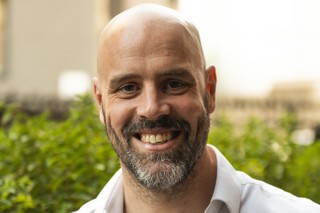
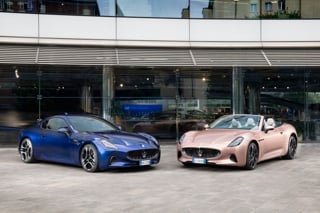
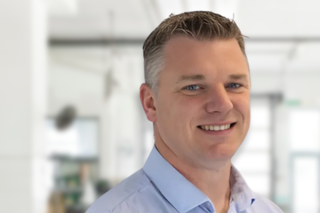

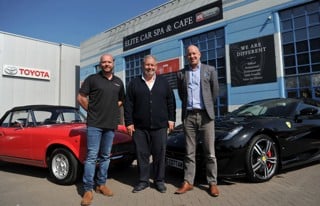

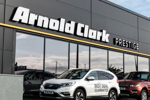
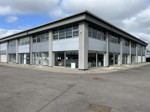




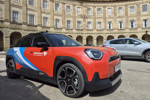

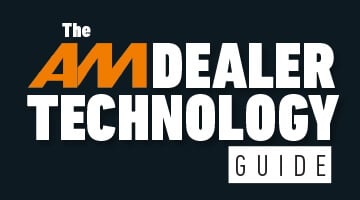
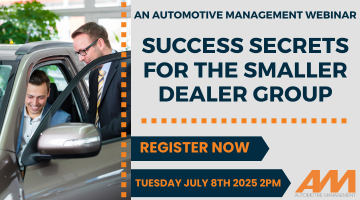
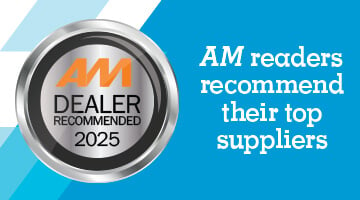
Login to comment
Comments
No comments have been made yet.